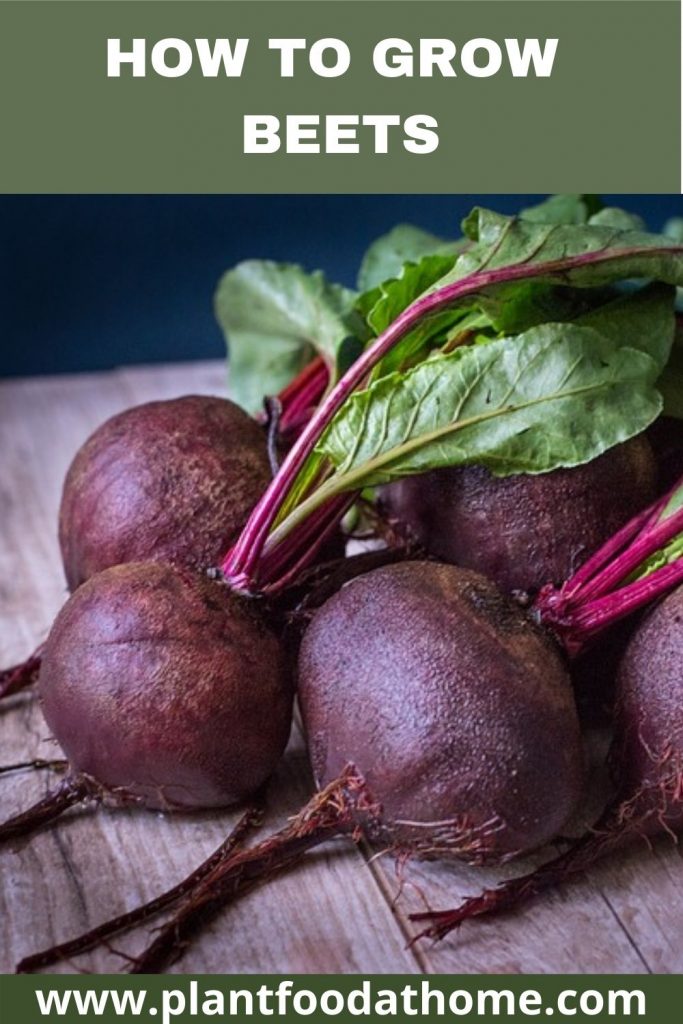The versatile beet is an excellent vegetable to plant in your vegetable garden. They’re easy to grow, and you won’t have to wait long for a tasty and plentiful harvest. Beetroot is a cool-weather crop that doesn’t require a great deal of space. This makes them an ideal choice for the home gardener. And garden-grown beets taste far superior to anything you’ve tried canned on the supermarket shelves! So let’s take a look at everything you need to know for how to grow beets at home.
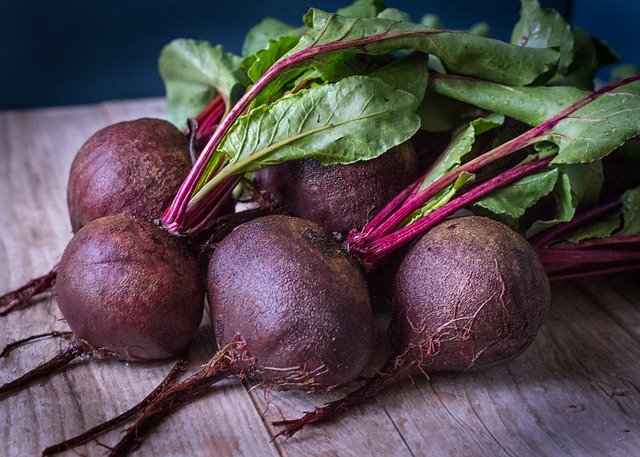
Table of Contents
Best Growing Conditions for Beets
As is the case with any fruit or vegetable you grow at home, you first need to ensure the conditions and environment are conducive to growing your chosen crop. So here are the best growing conditions for beets (Beta vulgaris).
Climate
Beets are a cool-season crop that thrives in temperatures ranging from 50-70°F (10-21°C). They do exceptionally well as a crop that is grown either in early spring or late summer to early fall.
Begin planting beets in the garden a couple of weeks before the last average frost date in spring. And then beets can be secession sown through to approximately six weeks before the first average frost in the fall.
It’s a good idea to make successive plantings every 2-3 weeks until mid-summer. But you can continue planting through the summer if temperatures don’t exceed 75°F (24°C).
Soil
To give your beets the best chance of producing a plentiful harvest, you should ensure the soil is free-draining and fertile. The addition of well-rotted compost prior to planting will help ensure soil fertility and assist the soil drainage.
When preparing your soil, make sure it is clear of debris and rocks, as these will inhibit your beets’ growth. Regarding soil pH, somewhere between 6.0 and 7.0 is ideal for beets. You can check the soil pH with a soil monitor here.
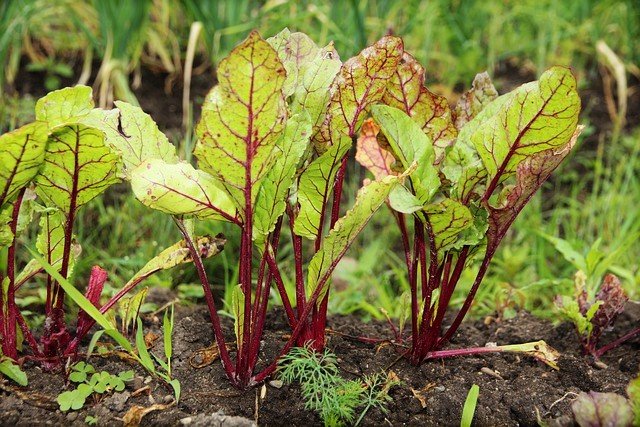
Sun
Beets thrive when planted in full sun of 6-8 hours a day, but you can also enjoy a good harvest from beets grown in partial shade. The amount of sun your beets get will determine whether they are better for roots or greens, so bear this in mind when selecting the ideal location for your crop.
Generally speaking, sunny plants form larger, sweeter roots, whereas those grown in the shade will still produce plenty of nutritious greens. If you’re unsure, elect to plant in full sun as beets thrive in such conditions.
Water
You should ensure your beets are evenly watered. It’s best practice to keep the soil appropriately moist, and it’s helpful if you regularly check that it’s not drying out. Your beets will actually indicate the moisture level of the soil; the outer leaves will begin turning yellow when the soil is too dry, and then red if it’s too wet.
What’s more, if you don’t add enough water to your beets, it will cause the roots to become stunted, tough, and stringy. As well as watering, it would help if you mulched your beets in full sun to conserve moisture content. This will prevent the soil from becoming stiff and crusty and will provide ideal growing conditions for your beets.
Fertilizer
If you want to encourage your beets along, you can apply organic fertilizers to your beds to stimulate their growth. You will need to ensure any organic fertilizer you utilize has the right balance between nitrogen, potassium, and phosphorus to help your beets grow.
If your fertilizer has too high a nitrogen content, you will get really leafy tops but little benefit for the development of the roots. This organic fertilizer is ideal for beets. You should work the fertilizer into the top four inches of soil with a shovel before planting. Or use the fertilizer on the surface of the soil once the beetroots are planted.
If you decide to forego fertilizer altogether, beets will benefit from natural fertilizers such as well-rotted manure and homemade compost, which increases soil fertility.
How to Grow Beets from Seeds
Now that we’ve understood the optimal growing conditions in which beets thrive, let’s take a look at a step-by-step guide detailing exactly how to grow beets in your garden from seeds.
- Select an area of the garden that receives sun throughout the day and is not wholly covered by shade.
- Prepare your soil and ensure the following:
- Till the soil, so it is loose and not compact.
- Remove all stones and other debris from the planting area.
- Add aged compost to beds before planting seeds.
- Ensure the pH level of the soil falls within the range of 6.0 to 7.0.
- Sow your seeds between ½ and ¾ of an inch deep into the loose soil. You should space them between 1 to 2 inches apart, in rows that are approximately 1 foot apart.
- The seeds are best sown when the soil temperature is between 45-77°F (7-25°C) for best germination. You can check the soil temperature with a soil thermometer here.
- Cover the planted beets with a thin layer of soil and water the surface generously and evenly.
- Mulch your beets in full sun to conserve the moisture content of the soil and carry out weeding to decrease competition for the nutrients within the soil.
- Once the greens get to about 4 inches tall, you will need to thin the young plants to 3 to 4 inches apart, as this stops then disturbing the roots of the desired seedling. Another method is to allow all the baby beets to grow together and when the biggest in the group is mature enough to harvest, you can do so and then allow the smaller beets to grow bigger.
- Within 10-12 weeks of planting, your beets should be ready to harvest.
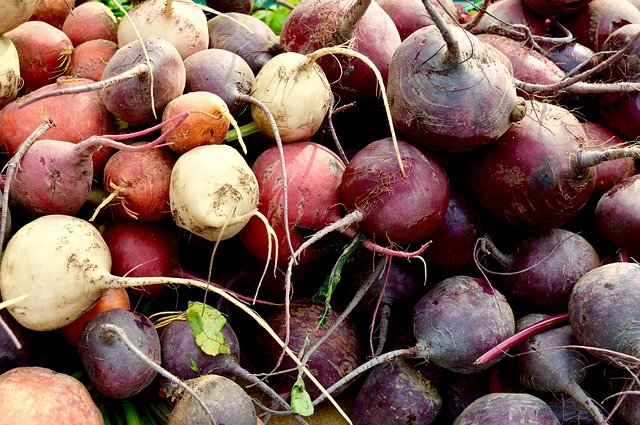
How to Grow Beets in Containers
As beets are versatile and adaptable, they grow just as well in containers as they do in direct soil, providing the conditions are ideal. To grow beets in containers, you can follow the step-by-step process detailed below:
- Select an appropriate container for your beets. Depth is the most critical consideration when it comes to choosing a container, as the roots need enough space to develop properly. Your chosen container should have a depth of at least ten inches (25cm).
- Like you would if you were planting your beets directly into the soil, make sure the soil in your container is clump-free and nutrient-rich. Select an organic potting soil such as this one to give your beets the best chance of success.
- Because beets are aggressive feeders, they will use up the nutrients in your container quickly. Consider adding organic fertilizer to support their development in a container.
- Ensure your container is placed in a position where your beets can enjoy direct sunlight.
- Sow your seeds between ½ and ¾ of an inch deep into the loose soil. You should space them between 2 to 3 inches apart.
- Cover the planted beets with a thin layer of soil and water the surface generously and evenly.
- Once the greens get to about 4 inches tall, you will need to thin the young plants to 3 to 4 inches apart, as this stops then disturbing the roots of the desired seedling. As mentioned earlier, another method here is to instead allow all the beets to grow and when the biggest in the group is mature enough to harvest, you can do so. The smaller beets will then have room to grow bigger and you’ll enjoy a harvest at a later time.
- Providing you’ve watered your beets consistently and evenly, they should be ready to harvest in 10-12 weeks.
Harvesting Beets
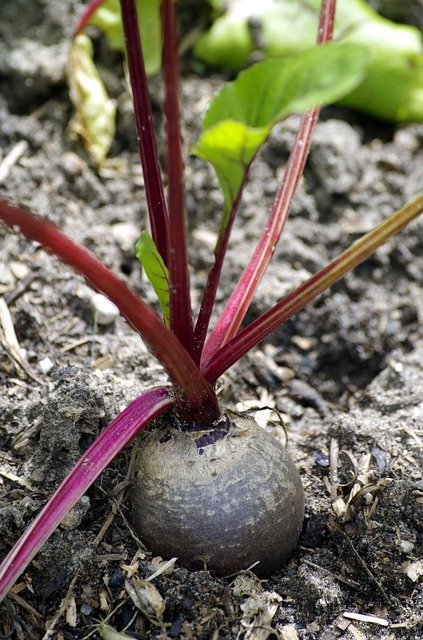
The time to maturity will depend on the variety, though most beets should be ready to harvest 10-12 weeks after planting. You will know the beets are ready to harvest when the top of the root is 1-3 inches wide. The beet itself will be sized somewhere between a golf ball and a tennis ball.
To harvest the beet, loosen the soil around the plant and gently pull it from the earth. More extensive roots may be particularly tough and woody, but you should be able to remove them by hand. Don’t forget you can enjoy the delicious greens as well as the roots, meaning the beet is an excellent all-round crop to grow and enjoy from your garden.
How to Store Beets
If stored properly, fresh beets will keep in the refrigerator for a few months after harvesting. To do this, remove the leaves, being sure to keep the tail end of the beetroot intact. Remove excess dirt and store in a plastic bag with a few well-placed holes.
Beets don’t need to be washed at this point, in fact, it’s better if you don’t as this will encourage excess moisture and may cause the beets to perish faster. But if you do, make sure the beets are thoroughly dry before you store them. Then place the bag of beets in the refrigerator crisper where they will keep for anywhere from 1 up to 3 months.
Check the beets every now and again to make sure there aren’t any going bad. Those that are softening should be discarded.
Remember the leaves of beets are edible, so you can cook them up as you would other green veg like spinach and Swiss chard. The leaves will keep fresh for around 2-3 days in the fridge.
And if you plan to keep your beets for a longer period in the cellar, for example, you can bury them in dry sand or sawdust to preserve them. If you don’t have a cellar, a cool, dry and dark environment such as a shelf in a garage is also a good option. This method will keep beets fresh for 3-5 months. Again, they should be checked periodically to ensure they remain fresh. Any soft or moldy beets should be discarded.
Freezing cooked beets will preserve them for around 10 months.
Ideas for Eating Beetroot
Beets are a versatile vegetable for cooking and eating. Here are a few ideas for how to use beets.
- Try our delicious Brown Rice, Kale, Beet and Feta Salad Recipe
- Roast beets in the oven
- Grate fresh beets on a salad
- Cook beets in an instant pot. Try this technique and salad recipe here: Instant Pot Beets and Beets Salad.
- Beets can be preserved by pickling or fermenting
- Try your own beet chips by drying them in a food dehydrator such as this one or in the oven
- Make a beetroot soup such as borscht. Try this recipe for borscht soup.
- Use beets to make a beetroot dip
And if you’re interested in learning more about eating beet leaves, we have this are: Eating Beet Greens With Recipe Ideas.
Popular Beet Varieties to Grow at Home
There are lot’s of different varieties of beets to grow and once you discover the kaleidoscope of colors they come in, from white, yellow and candy stripes, you’ll be excited to try a few! So here are some poplar beetroot varieties you can grow at home.
Chioggia Beetroot or Candystripe – this gorgeous beet is red on the outside but cut it open and it grows in red and white candy cane rings.
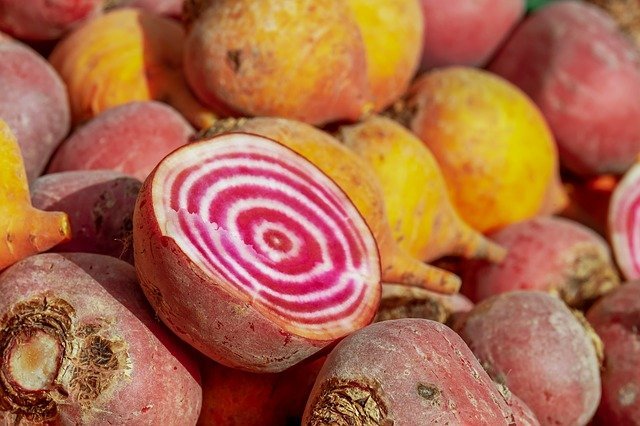
Detroit Red Beetroot – this variety of beet is fast growing and a great all-rounder.
Early Wonder Beetroot – named so because it is early to mature. An heirloom variety producing round, smooth beets.
Golden Detroit Beetroot – this is an heirloom variety producing a lovely yellow beet.
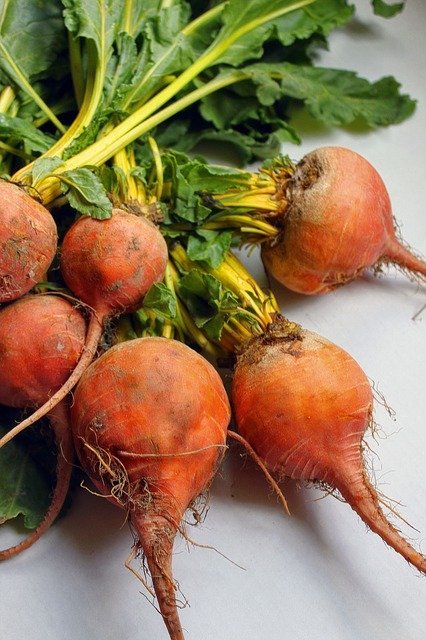
White Beetroot – an heirloom beet that tastes like a regular beet only the color is white.
Bulls Blood Beetroot – an heirloom beet producing ruby-red leaves which green up in warmer weather.
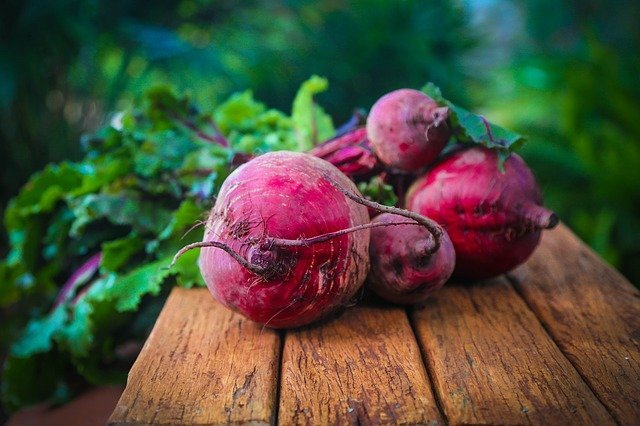
Conclusion
Beets are an excellent crop to grow in the garden, thanks to the fact they are resilient and able to be grown at different times of the year. So choose a variety or two to grow, get busy planting and, you’ll grow a plentiful harvest of beets you can enjoy in a variety of ways.
Recommended products
- Organic Vegetable Garden Fertilizer
- Soil pH, Water and Light Gauge
- Soil Thermometer
- Organic Seed Raising Soil Mix
- Organic Potting Mix
- Horticultural Neem Oil
- Food Dehydrator
Further reading:
- Why Are My Beets So Small? Answered!
- 13 Beet Pests Eating Your Crop (With Organic Solutions)
- Beet Leaves Turning Yellow? Causes and Solutions
- Why Are My Beets Dying? Causes and Solutions
- How to Grow Radishes: the Easiest Vegetable to Grow
- How To Grow Sugar Snap Peas: Growing Guide And Tips
- 16 Vegetables You Can Regrow From Kitchen Scraps
- How To Grow Swiss Chard For Fast Leafy Green Vegetables
- Tips to get Asparagus to Come Up: Growing Tips
